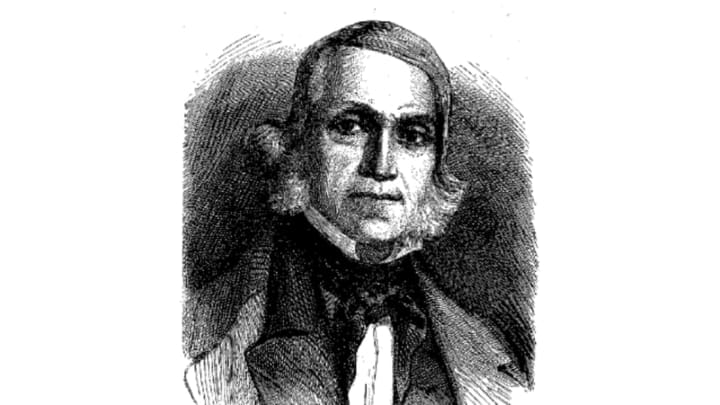There’s a famous dispute over who invented the telephone. According to some, it was Alexander Graham Bell. According to others, Elisha Grey got there first. Then there’s the German inventor Philipp Reis and his “Reis telephone,” which was based on an earlier idea by the French scientist Charles Bourseul. And no discussion of 19th century inventors would be complete without Thomas Edison, who patented his “carbon microphone” in 1877, which led to a patent fight that reached the Supreme Court.
But before all of them was the little-known French musician and inventor Jean-François Sudre. His invention may have little (if anything) in common with a modern electronic telephone, but Sudre is nevertheless credited with coining the word telephone and attaching it to a remarkable system he devised for transmitting messages in the early 1800s.
Sudre was a violinist, composer, and music teacher who had been educated at the prestigious Conservatoire de Paris. It was his musical background that in 1827 led Sudre to devise a system of communication in which different combinations of the seven different notes of the musical scale—doh, re, mi, fa, sol, la, and ti—were assigned to all the words in the language. Playing these different combinations of notes could ultimately be used to send musically coded messages on practically any musical instrument.
In Sudre’s system, on their own the seven notes of the scale represented seven basic, high-frequency words: no (doh), and (re), or (mi), at or to (fa), if (sol), the (la) and yes (ti). Forty-nine possible two-note combinations were used for pronouns, prepositions, and other high-frequency words, like I (doh-re), good (mi-sol), what (fa-doh), and thank you (sol-ti). And 336 three-note combinations were reserved for days (Monday = sol-sol-doh), months (August = re-re-mi), seasons (winter = doh-doh-fa), units of time (year = doh-re-la), and dozens more commonly used words like water (doh-sol-ti) and bread (doh-sol-mi).
As the combinations of notes lengthened, Sudre divided the language into broad thematic categories designated by their first note, or “key.” So all the words in “the Key of Doh” were concerned with “physical and moral aspects of men” (eye = doh-re-mi-re, superstition = doh-mi-ti-ti), while the Key of Re was reserved for “family, household, and dress” (umbrella = re-doh-sol-ti, rent = re-mi-fa-ti). Nouns were pluralized by lengthening their final syllable, while the feminine equivalents of masculine words were produced by accenting or stressing the final syllable—so the combination ti-sol meant sir or Mr, while ti-SOL was madame or Mrs.
Sudre called his system Solrésol, his musical translation of the word “language.” He spent years championing it and publicizing it at demonstrations all over Europe, in which he would ask for random words and phrases from the audience, play them on stage on his violin, and then, to the audience’s amazement, have his assistant—who was positioned outside of normal speaking range—come to the stage and accurately relay the messages word for word.
As neat an idea as Solrésol was, however, it had two principal drawbacks. Firstly, the person receiving your coded message would have to have perfect pitch in order to correctly interpret the notes you’re playing—and even then the margin for error was terrifically small. Mishear the first note of Sudre’s word for asthma (fa-la-la-sol) as one note higher than it actually is, for instance, and you’ll translate it as excrement (sol-la-la-sol). Hear the “res” in his word for buttons (sol-re-re-do) as “mis,” and it’ll become the Solrésol word for scab (sol-mi-mi-do). Not only that, but the distance over which you can transmit your message in Solrésol is obviously limited by how loud the instrument you’re playing it on is. Sudre’s backstage assistant might be able to hear, but how could you communicate a message from, say, one town to another, or between two ships at sea?
To get around these issues, Sudre spent years compiling an entire dictionary of Solrésol [PDF] published three years after his death, in 1865, and eventually elaborated his system so that words could be communicated not just using the seven different notes of a scale, but the seven different colors of the rainbow. But in order to solve the issue of transmitting messages over distances, Sudre conceived of an enormous musical instrument, capable of playing the different notes and different musical nuances required to communicate Solrésol messages, which he called the téléphone—a combination of the Greek words for far and sound.
Although both Sudre’s “telephonic system” of musically encoding messages and his enormous musical foghorns failed to catch on, he can at least be credited with the invention of the word telephone—two decades before Alexander Graham Bell was even born.
